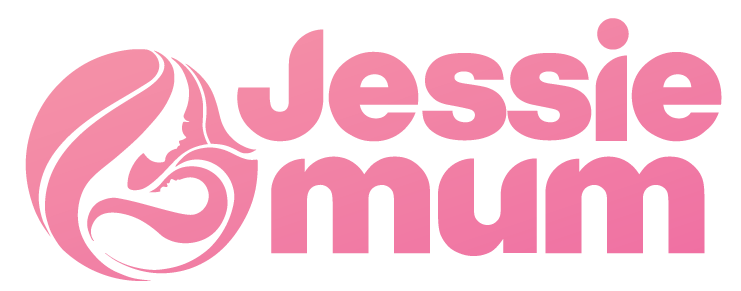การเลี้ยงลูกด้วยนมแม่เป็นวิธีที่ดีที่สุด สำหรับการเลี้ยงลูกในระยะแรกเริ่ม แต่บางครั้งเด็กทารกอาจต้องการอาหารเสริมเพิ่มเติม เนื่องจากนมแม่ไม่เพียงพอหรือไม่สามารถให้นมแม่ได้ เพื่อให้เลือกซื้ออาหารเสริมที่เหมาะสมสำหรับเด็กทารก นี่คือวิธีที่คุณแม่สามารถทำได้
- การเลือกนมผง
ถ้าคุณแม่ไม่สามารถให้นมแม่ได้เพียงพอ คุณสามารถเลือกซื้อนมผงที่เหมาะสมสำหรับเด็กทารก ควรเลือกซื้อนมผงที่มีส่วนผสมของโปรตีนและวิตามินอย่างเพียงพอ เช่น นมผงสูตรอนุมูลสารเบต้า หรือนมผงสูตรโปรตีนสูง
- การเลือกอาหารเสริม
คุณแม่สามารถเลือกซื้ออาหารเสริมสำหรับเด็กทารกที่มีส่วนผสมของวิตามินและแร่ธาตุที่เพียงพอ เช่น ซีเรียล เพื่อสร้างกล้ามเนื้อและฟื้นฟูร่างกาย ไข่แดง ผักผลไม้ ที่มีแคลอรี่ต่ำและมีวิตามิน C เช่น กล้วย ส้ม และฝรั่ง เพื่อเสริมสร้างระบบภูมิคุ้มกัน
- การเลือกขนมคุณภาพดี
ขนมที่เป็นอาหารเสริมสำหรับเด็กทารก แต่ควรเลือกซื้อขนมที่มีคุณภาพสูงและไม่มีสารก่อภูมิแพ้ ควรเลือกซื้อขนมที่มีส่วนผสมของธัญพืชและผักผลไม้ และไม่มีสารกันบูด เช่น ขนมปังกรอบ และขนมชนิดถั่ว
- การเลือกอาหารเสริมที่มีโปรไบโอติกส์
คุณสามารถเลือกซื้ออาหารเสริมที่มีโปรไบโอติกส์ เช่น โปรไบโอติกส์จากสาหร่าย ซึ่งช่วยกระตุ้นระบบภูมิคุ้มกันและสร้างเซลล์ใหม่ในร่างกายของเด็กทารก
- การเลือกอาหารที่มีสารอาหารที่สูง
คุณแม่สามารถเลือกอาหารที่มีสารอาหารที่สูง เช่น อาหารที่มีโปรตีน เช่น ปลา ไก่ และเนื้อวัว เพื่อสร้างกล้ามเนื้อและเซลล์ใหม่ในร่างกาย และอาหารที่มีไขมันไม่เกิน 30% และมีคาร์โบไฮเดรตไม่เกิน 50% เพื่อป้องกันความอ้วนและโรคเบาหวานในอนาคต
โดยการเลือกซื้ออาหารที่เหมาะสมสำหรับเด็กทารกมีความสำคัญมากเนื่องจากเป็นการสร้างระบบภูมิคุ้มกันและเสริมสร้างร่างกายของเด็กทารกในระยะแรกเริ่ม คุณแม่ควรปรึกษาแพทย์หรือผู้เชี่ยวชาญด้านโภชนาการเพื่อเลือกซื้ออาหารที่เหมาะสมสำหรับลูกของคุณ
Reference
- “Breastfeeding and the Use of Human Milk: An Analysis of the American Academy of Pediatrics 2012 Breastfeeding Policy Statement,” published in the Pediatrics journal in 2012. URL: https://pediatrics.aappublications.org/content/129/3/e827
- “Complementary Feeding of Infants in Developing Countries: A Review of Current Knowledge and Recommendations,” published in the World Health Organization (WHO) journal in 2004. URL: https://www.who.int/nutrition/publications/complementary_feeding_infants.pdf
- “Infant Feeding in Emergencies: A Guide for Mothers,” published by the United Nations Children’s Fund (UNICEF) in 2017. URL: https://www.unicef.org/publications/files/Infant_feeding_in_emergencies.pdf
- “Maternal and Child Nutrition Study Group. Maternal and child undernutrition and overweight in low-income and middle-income countries,” published in the Lancet journal in 2013. URL: https://www.thelancet.com/journals/lancet/article/PIIS0140-6736(13)60937-X/fulltext
- “Introduction of Complementary Feeding Before 4 Months of Age Increases the Risk of Childhood Overweight or Obesity: A Meta-Analysis of Prospective Cohort Studies,” published in the Nutrients journal in 2018. URL: https://www.ncbi.nlm.nih.gov/pmc/articles/PMC5986489/
- “Infant Nutrition and Later Health: A Review of Current Evidence,” published in the Nutrients journal in 2020. URL: https://www.ncbi.nlm.nih.gov/pmc/articles/PMC7230582/
- “Complementary Feeding: A Global Overview,” published in the Journal of Pediatrics and Child Health in 2013. URL: https://onlinelibrary.wiley.com/doi/full/10.1111/jpc.12068
- “Nutrition of the Preterm Infant: Scientific Basis and Practical Guidelines,” published in the World Health Organization (WHO) journal in 2013. URL: https://www.who.int/nutrition/publications/guidelines/nutritionpreterm/en/
- “Maternal Diet during Pregnancy in Relation to Offspring Body Composition and Metabolic Health,” published in the Journal of Developmental Origins of Health and Disease in 2018. URL: https://www.cambridge.org/core/journals/journal-of-developmental-origins-of-health-and-disease/article/maternal-diet-during-pregnancy-in-relation-to-offspring-body-composition-and-metabolic-health/6F3A369365E0D461B2126D417A6A2C1A

